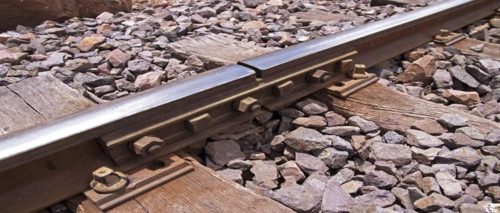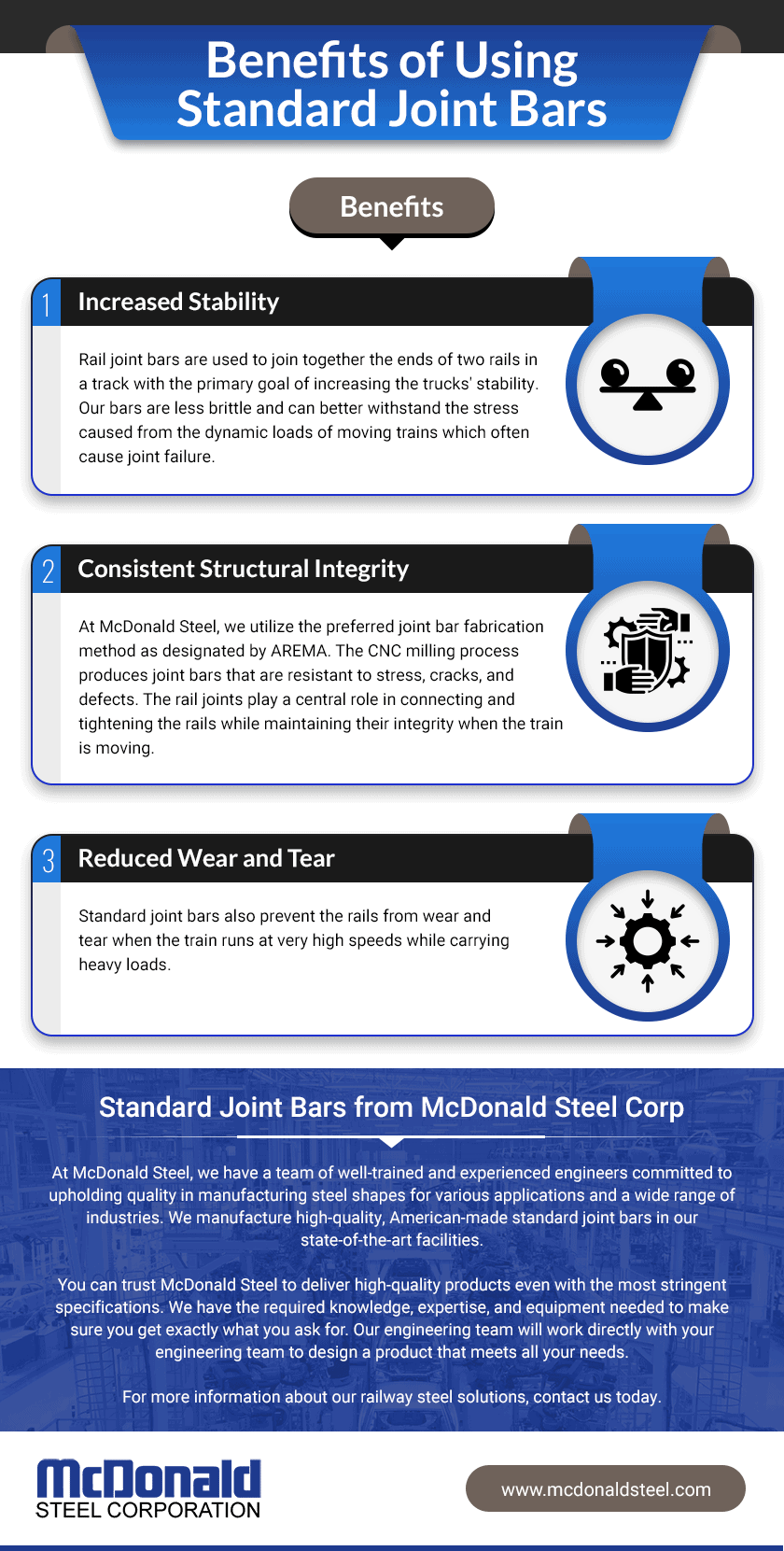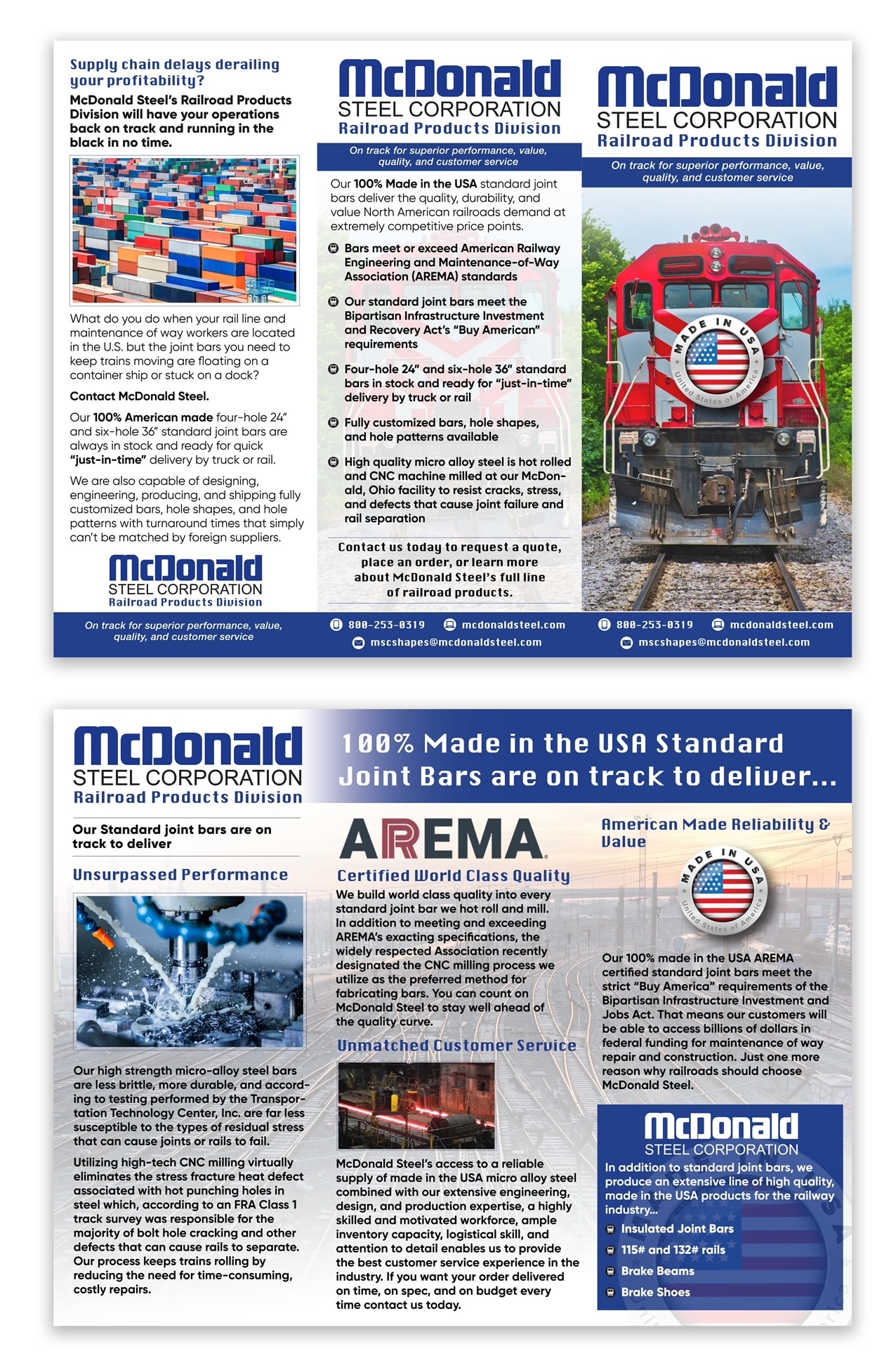
Rail joint bars, also known as splice bars or fishplates, are special metal bars bolted to the ends of two railroad rails to join them in a rail track. High-quality joint bars can help lower the impact of wheels on the joint parts of the steel rail. Rail joint bars play a crucial role in ensuring the train’s steadiness and safety as it moves through the jointing rail sections.
How Are Joint Bars Made?
A railway track system has two main parts: the rail track and the rail joint bar. The rail track provides the foundational construction of the railway line and the joint bar connects the rails using different rail fasteners like rail clips, rail anchors, and rail truck nuts and bolts, among many other fasteners.
McDonald Steel manufactures joint bars according to the American Railway Engineering and Maintenance-of-Way Association specifications (AREMA). With quality in mind during every step of production, we utilize advanced CNC milling technology to hot roll and mill microalloy steel into durable joint bars. Our process eliminates the risk of stress fractures common in more traditional manufacturing methods, such as hot punching to create connection holes. The manufacturer and the client agree upon the percentage of chemical composition to achieve superior mechanical properties.
Benefits of Using Standard Joint Bars
Standard joint bars offer many advantages, including:
- Increased stability: Rail joint bars are used to join together the ends of two rails in a track with the primary goal of increasing the tracks’ stability. Our bars are less brittle and can better withstand the stress caused from the dynamic loads of moving trains which often cause joint failure.
- Consistent structural integrity: At McDonald Steel, we utilize the preferred joint bar fabrication method as designated by AREMA. The CNC milling process produces joint bars that are resistant to stress, cracks, and defects. The rail joints play a central role in connecting and tightening the rails while maintaining their integrity when the train is moving.
- Reduced wear and tear: Standard joint bars also prevent the rails from wear and tear when the train runs at very high speeds while carrying heavy loads.
McDonald Steel also uses microalloyed steel in the manufacture of standard joint bars. As mentioned, microalloyed steel is widely sought after for its added strength and resistance to wear and tear.
Standard Joint Bars from McDonald Steel Corp
At McDonald Steel, we have a team of well-trained and experienced engineers committed to upholding quality in manufacturing steel shapes for various applications and a wide range of industries.
You can trust McDonald Steel to deliver high-quality products even with the most stringent specifications. We have the required knowledge, expertise, and equipment needed to make sure you get exactly what you ask for. Our engineering team will work directly with your engineering team to design a product that meets all your needs.
For more information about our railway steel solutions, contact us today.
Also, check out our featured article on Joint Bars in Progressive Railroading Magazine!


